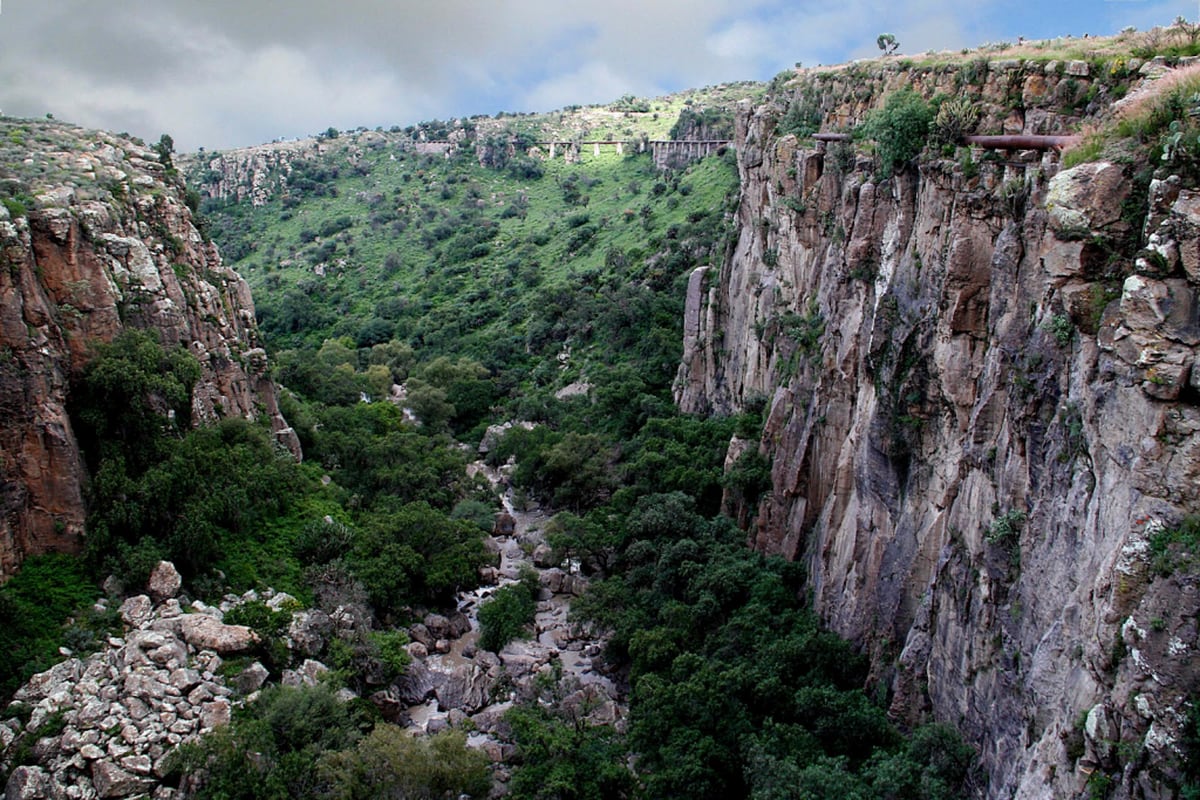It could be said that ten serigraphs by the artists Jan Hendrix, Joy Laville, Pedro Friedeberg, Sergio Hernández, Miguel Castro Leñero, Carla Rippey, Mario Palacios Kaim, Martha Helion, Boris Viskin and Roberto Turnbull, are also some of the founding pieces of the Garden Botanical of San Miguel de Allende, called El Charco del ingenio. They—Mexicans and foreigners—were summoned by Cante AC—the organization that was then responsible for the space—so that with their work they could capture the resources and attention necessary for the botanical garden to become a possible space in which science, art and biodiversity coexist in what is now a community space that preserves ancestral knowledge, the richness of the semi-desert of Guanajuato, and art and science.
Those who knew the place, back in the late 1980s, describe it as a forgotten wasteland. An abandoned piece of land, with deadly marks left by logging, soil extraction, hunting, grazing, fires, clearing and mountains of garbage. It was the last undeveloped ravine in San Miguel Allende, at risk of being swallowed up by everything that would come later. And it was one of the emblematic places that demonstrate the power of communities when they organize to achieve common benefits.
Screen prints by Sergio Hernández, Carla Rippey and Roberto Turnbull.Courtesy
With the collaboration of neighbors, artists, scientists and representatives of indigenous communities, the rescue of a place that was believed to be on the verge of disappearing was possible. Dutch artist Jan Hendrix; the English painter and sculptor, nationalized Mexican, Joy Laville; the Mexican artists Pedro Friedeber, Sergio Hernández, Miguel Castro Leñero, Roberto Turnbull, Boris Viskin, Mario Palacios Kaim and Martha Helion; and the American Carla Rippey—heirs of the so-called Generation of Breakup—heeded the call that brought them together in the same artistic setting in which they were asked to create a work especially for the first steps of the botanical garden.
A semi-desert in all its expressions, these are the ten ways to honor and see the botanical garden. César Arias, president of the board of directors of El Charco del Ingenio, says that the folder that contained the ten serigraphs made by those artists was lost during these years and that finding them—just two years ago—reminds him a lot of the greatness of what happened 27 years ago. years, when the garden began to become something that crossed the borders of just a space with a unique natural wealth: “The artists were already renowned in their time. “They responded to the call, and they knew about the conservation project that was being born,” he says, excitedly.
In the background, at the opening of the exhibition that contains the ten works, at the Bella Época cultural center – of the FCE bookstore, Rosario Castellanos – in Mexico City, the music of the Englishman Michael Hoppé plays, one more name that is added in that long list of creators who decided to offer their art to the place. “The English composer and his wife lived in San Miguel de Allende during the pandemic. They went there to walk and were so grateful for what that space meant at a time like that, that Hoppé decided to write an entire album in tribute,” says Arias.
For Marco Barrera Bassols, coordinator of International Linkage of the Economic Culture Fund – the venue that hosts the small exhibition -, these artistic expressions add to the history that Charco del Ingenio has been counting since its first years, and ensures that the distinction that the place has been given as “ethnobiological garden” It is a new way of understanding gardens.
In that space in the Mexican capital, surrounded by some 175,000 books on display, the exhibition will be present throughout the month of January. “The botanical garden cannot only be dedicated to botanical taxonomy, but has many aspects, ethnobiological, biocultural, we cannot think about the great biological diversity of Mexico if we do not think that there is cultural megadiversity and that this wealth has been historically linked also with the cultures that have lived here,” explained Arias.
Fernando Gálvez, curator of this exhibition, was in charge of giving a rereading of the first curatorship that was carried out almost 30 years ago. Now, with the distance of time, he assures that the task also represents the way in which the botanical garden has been transformed in recent years: “I had to read the previous curatorship and rethink it in the texts that accompany each of the works. Most important of all, the garden matured at the same time as the artists. Many of those names when they made these pieces were still emerging artists or were just starting out successfully. For me, today the garden is one of the most relevant in Mexico, it transcends the idea of a garden,” he says.
Some of the screen prints on display. Courtesy
Subscribe here to the EL PAÍS México newsletter and receive all the key information on current events in this country
Subscribe to continue reading
Read without limits
_
2024-01-22 04:34:18
#Silkscreen #art #offerings #save #Botanical #Garden #San #Miguel #Allende


